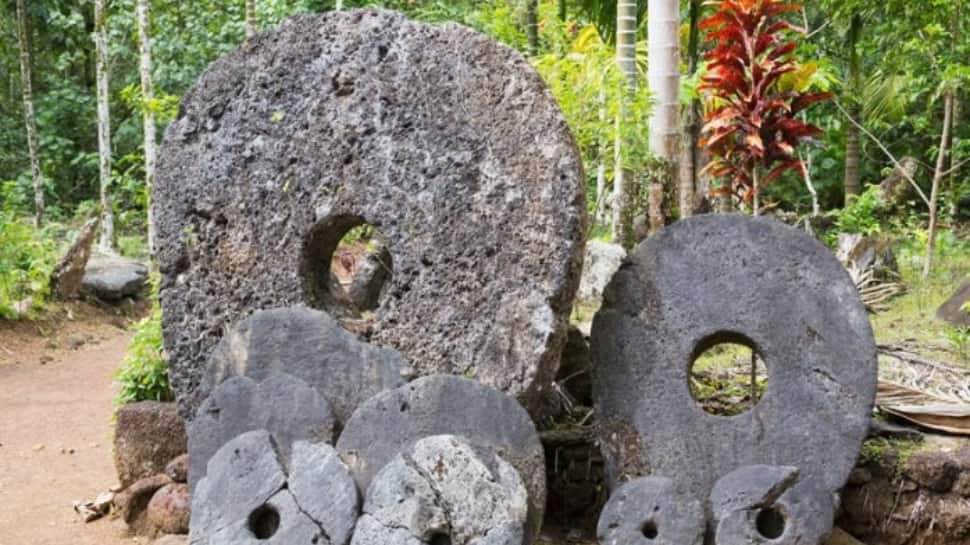One of the most unusual currencies in the world, the Rai stone, is found on the tiny island of Yap in the Pacific Ocean. The money of this Micronesian island is made up of huge limestone discs, some of which weigh several tons and have a diameter of more than 3.6 meters, unlike conventional coins or banknotes. These “coins” are not only the largest and heaviest in the world, but they also symbolize an intriguing cultural custom rooted in Yap’s past.
Where do Rai stones come from?
The Yapese began quarrying stones from the island of Palau, more than 400 kilometres away, in AD 500, when the first Rai stones were found. It was no easy task to transport these huge stones across the ocean; it often required a whole crew of locals and large canoes. The laborious and dangerous nature of the process increased the value of the stones.
Interestingly, the value of a stone is not always determined by its size, but by its past (how difficult it was to transport, whether lives were lost in the process, and its age). Because of their historical significance, Rai stones are more than just a means of exchange; they are indicators of status and prestige.
How Rai Stones Work as Money
Although it may seem hard to imagine, the Yapese people have created a special system for using huge stones as money. Stones rarely physically change hands, but ownership is passed on orally and the stones remain in the same place for many years. All members of the community know who owns each stone and decisions are made based on this shared understanding.
The importance of culture
Rai stones are more valuable than money, as they are part of the social and political structure of Yap society. Although most daily transactions now use contemporary currency, the stones are still used today in some traditional ceremonies and as a symbol of wealth.
Yap’s massive Rai stones remain a stunning representation of the island’s culture and provide insight into the unusual ways communities can assign value.
Disclaimer:
The information contained in this post is for general information purposes only. We make no representations or warranties of any kind, express or implied, about the completeness, accuracy, reliability, suitability or availability with respect to the website or the information, products, services, or related graphics contained on the post for any purpose.
We respect the intellectual property rights of content creators. If you are the owner of any material featured on our website and have concerns about its use, please contact us. We are committed to addressing any copyright issues promptly and will remove any material within 2 days of receiving a request from the rightful owner.

